| Title | Pages |
|---|---|
| Preface Dear readers of the Hacettepe Journal of Biology and Chemistry, It is now past 10 years since I become an editor of the journal with the ideas to create a peer-reviewed journal to focus upon the rapidly moving and exciting interdisciplinary area of natural sciences where science, technology and engineering combines and interacts. As a chief editor I have watched the growth and success of the journal with pleasure. This is the short review of the results and statistics of the previous ten years; 41 issues and 451 articles were published in the past ten years, which have the acceptable quality from many countries. We also have published 6 special issues including on the honor of the Nobel Prize of Aziz Sancar. The diversity and high standard work published in the journal is reflected in the content of the present issue of the journal, as well. For Hacettepe Journal of Biology and Chemistry to continue to thrive with that standard and diversity we look forward to the submission and publication of novel and leading articles in the future. Finally, when launching the first volume of the tenth year, I wish to thank all authors, readers and referees for their invaluable efforts. Sincerely, 
|
Preface |
| Preparation of Hydrophobic Monolithic Columns for On-line Solid-phase Extraction Coupled with HPLC for the Determination of Trace Level Benzo[a]pyrene Extraction of trace level persistent organic pollutants is an important issue in water samples. So in this work, p(HEMAPA) monolithic columns were developed as a novel kind of solid-phase extraction adsorbents, as well as p(HEMAPA) solid-phase extraction (SPE) adsorbent was coupled with high-performance liquid chromatography (HPLC) (p(HEMAPA-HPLC) for the determination of benzo[a]pyrene (BaP) on-line mode. After p(HEMAPA-HPLC) para- meters including the injection volume, flow rate, and the sample volume had been optimized in detail, BaP separation procedures on the p(HEMAPA-HPLC) containing mobile phase, different amounts of BaP, and reusability were perfor- med. Advantages of this procedure are low quantitation limits (0.05–1.0 ng/mL), short extraction time, low consump- tion of organic solvents, and ease of automation and operation of the whole analysis. The experimental results indi- cated that p(HEMAPA-HPLC) allowed for one-step BaPs extraction, clean-up and analytical determination under the optimal conditions. The reusability of BaPs from water samples was 99.7% with a negligible capacity decrease after ten adsorption–desorption cycles. The method detection limit (MDL), relative standard deviation (RSD) and recovery were obtained as 0.007 ng/mL, 0.26%, and 97.0%, respectively. It was concluded that p(HEMAPA) monolithic column coupled with HPLC was an excellent alternative for the routine analysis of BaPs at trace level. 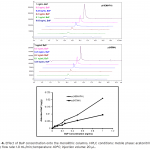
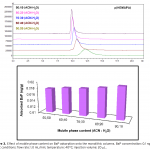
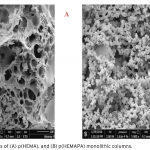

|
143 - 151 |
| Synthesis and Biological Evaluation of New 2-Ethoxy-6-[(4,5- dihydro-1H-1,2,4-triazol-5-one-4-yl)iminomethyl]phenyl 4-nitro-benzoate Derivatives In the present study, 3-alkyl(aryl)-4-amino-4,5-dihydro-1H-1,2,4-triazol-5-ones (1) reacted with 3-ethoxy-2-(4- nitrobenzoxy)-benzaldehyde (2) to afford 2-ethoxy-6-[(3-alkyl/aryl-4,5-dihydro-1H-1,2,4-triazol-5-one-4-yl) iminomethyl]phenyl 4-nitrobenzoates (3). The structures of new nine compounds were established from the elemental analyses, IR, 1H NMR and 13C NMR spectral data. The synthesized compounds were analyzed for their in vitro potential antioxidant activities in three different methods. In addition, these new compounds were screened for their antimicrobial activities. 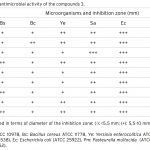
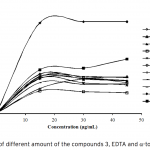
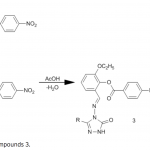
|
153 - 161 |
| Classical and Microwave-Assisted Synthesis of Substituted- Dihydroxy-imidazolidine-2-thiones Compounds In this study, N-N’-disubstitued thiourea and N-N’-disubstituted-4,5-dihydroxy-2-imidazolidine-2-thione were prepared through the reaction of suitable primary aromatic amines with phenylisothiocyanate and 4-met- hoxyphenylisothiocyanate. The synthesis of N-N’-disubstitued thiourea were carried out by classic methods. Later, the acid-catalyzed cyclocondensation in refluxing acetonitrile of aqueous glyoxal and led to the formati- on of the corresponding N,N’-disubstitued-4,5-dihydroxyimidazolidin-2-thiones. Thiourea derivatives were pre- pared both classical method and microwave assisted synthesis. Microwave-assisted reaction was performed in temperature and pressure control devices with the atmospheric pressure environment. The structures of synthesized organic compounds were characterized by FT-IR and 1HNMR spectroscopy. 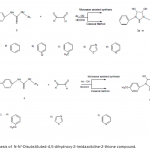
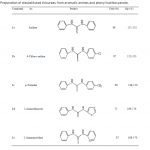
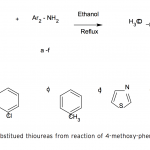
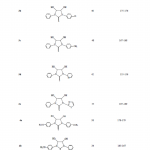
|
163 - 174 |
| Experimental (X-ray Diffraction and FT-IR) and Quantum Chemical Studies (HF and DFT) of Ethyl 3-hydroxy-7-methyl- 3-(3-methyl-3-phenylcyclobutyl)-5-phenyl-3,5-dihydro-5H- thiazolo [3,2-a]pyrimidine-6-carboxylate The title compound, ethyl 3-hydroxy-7-methyl-3-(3-methyl-3-phenylcyclobutyl)-5-phenyl-3,5-dihydro-5H- thiazolo[3,2-α]pyrimidine-6-carboxylate, was synthesized and characterized by experimental and quantum chemical methods. The crystal structure of compound was brought to light by single crystal X-ray diffraction method and its vibrational spectrum (FT-IR) in solid state was observed in the region 4000-400 cm-1. The molecular geometry was those obtained from the X-ray structure determination was optimized using Hartree- Fock and Density Functional Theory (DFT/B3LYP) method with the 6-31G(d) basis set in ground state. From the optimized geometry of the molecule, geometric parameters (bond lengths, bond angles, torsion angles) and vibrational assignments of the compound have been theoretically calculated and compared with the experi- mental data. The obtained structural and vibrational results are well in agreement with the experimental mea- surement. The frontier molecular orbital (FMO) and Mulliken population analysis of the optimized geometries were investigated by theoretical calculation results. 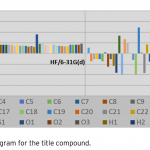
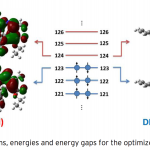
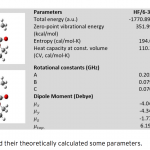
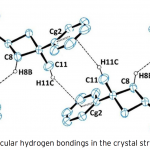
|
175 - 186 |
| Synthesis, Characterization and Chromatographic Applications of Antimicrobial Cryogels Antibacterial materials, in the last years, have become an important center of attention against diseases be- cause of pathogenic bacteria. Within the scope of this study, antimicrobial poly(2-hydroxyethyl methacrylate- glycidyl methacrylate), poly(HEMA-GMA), cryogels were synthesized and Ag(I) ions were immobilized to the structure through the amino acid L-Arginine. For characterization of the structure; swelling test, Fourier transform infrared (FT-IR) spectroscopy, scanning electron microscopy (SEM), surface area (BET), elemental analysis and ICP-OES methods were performed. The L-Arginine amino acid was used as an Ag (I) chelating ligand and the melittin protein adsorption capacity of cryogels was determined as 173.9 mg/g cryogel. 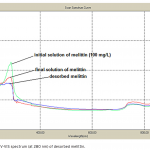

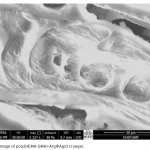
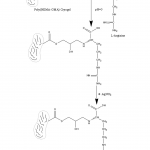
|
187 - 195 |
| Isolation and Characterization of a Parasitic Nematode, Oscheius myriophila (Nematoda: Rhabditida), Associated with European Mole Cricket, Gryllotalpa gryllotalpa (Orthoptera: Gryllotalpidae) Anematode strain was isolated from a population of European mole cricket, Gryllotalpa gryllotalpa L. (Orthoptera: Gryllotalpidae), collected from the Black Sea Region of Turkey. Based on morphometrical and molecular (ITS partial sequence) properties, it was identified as Oscheius myriophila. This species of dauer juveniles resembled with Rhabditis myriophila (Poinar, 1986), however, it differs in having larger body length (571.3-693.9) and distance from the head to the nerve ring (100-116.8), and smaller tail length (53.4-76.8) and width at anus (10.4-13.8). This stage is the third-stage juvenile enclosed in a second-stage cuticle that surrounds the nematode like a sheath. The sequences of the ITS region of rDNA confirmed this identification. The species is recorded for the first time from G. gryllotalpa. 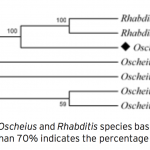
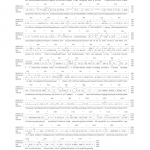
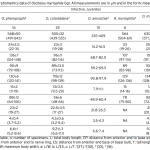
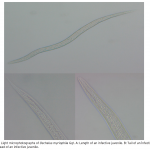
|
197 - 203 |
| Cultivation of Agaricus bisporus X25 on Reed Plant (Phragmites australis) Straw Decomposed by Using Actinomycetes The reed plant is available as economic alternative instead of wheat straw in state unavailable or the high prices to use it in the preparing compost for cultivation of Agaricus bisporus X25. In significant (P<0.05), use of Streptomyces inoculum led to increase the total yield of A. bisporus X25 during 21 days to 430 g/box (g/5 kg compost based on wet matter) compared without treatment (376.94 g/box). The treated reed straw showed higher yield 496.33 g/box. Using bacterial inoculum given biological efficiency 26.3% compared without treatment 23.8%. The best biological efficiency was 29.3% with treated reed straw compost using bacterium Streptomyces, while, the lower value was 20.8% for the mixture compost in same previous case. Quality and size of fruiting bodies were varied from compost to another one depended on diameter of cap (pileus), length of stipe. The bigger diameter had been recorded 55.83 mm for fruits of reed straw compost while the lower diameter was 42.33 mm on fruits of control compost. 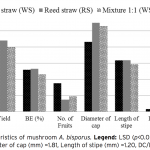
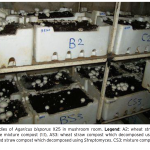
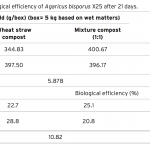
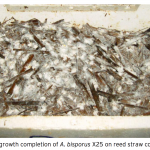
|
205 - 212 |
| Primary Culture of Lepidopteran Adherent and Suspension Cells from Larval Testes of Bombyx mori In this study, first aim is to establish primary insect cell culture from larval testes of Bombyx mori. The other aim this to investigate the appropriate cells for establishing continuous cell lines. Testes obtained from 5 instar larvae of B. mori were cultured in Grace’s insect medium. Consequently, it was seen that primary cell culture from testes of B. mori resulted in suspension and adherent cell lines. In addition, this study showed that while adherent cells were not appropriate choice to initiate continuous cell line, suspension cells were suitable to establish continuous cell lines from Bombyx mori testes. 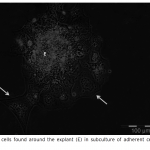

|
213 - 218 |
| The Degradation Behavior of TPS/LDPE Blend Mulch Films Prepared with Different Pro-oxidants Low density polyethylene (LDPE) was blended with thermoplastic starch (TPS) by twin screw compounder to prepare partially degradable mulch films. In the present study, ferric stearate and manganese(II) stearate were used as pro-oxidant and the effect of different pro-oxidants on the degradation of the blends were investigated. The blended mulch films were buried in soil inoculated with Coriolus versicolor (L.) Quél. for 180 days for the degradation. The chemical structures of the films were evaluated by FTIR spectroscopy and the weight loss of all samples was measured before and after soil burial treatment. The effects of two different pro-oxidants on thermal and tensile properties of blends were determined by TGA and mechanical analysis. A synergetic effect between ferric stearate and citric acid was observed. Using both in the blends resulted in higher thermal stability of TPS in the blends. Significant improvement of the mechanical properties was also observed. However, when manganese(II) stearate used together with citric acid a decrease in the mechanical properties was observed compared blends with stearic acid. 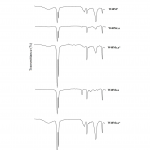
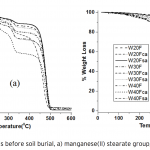

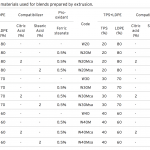
|
219 - 230 |
| Investigation Effects of Some Heart Disorder Drugs on Human Carbonic Anhydrase I In the treatment of heart disorders, metoprolol tartrates and digoxin drugs which act by way of blood are used widely. Being vital of using these drug substances, investigation of inhibitory effect on the activities of enzymes in the blood reveals the importance of this work. Aim of this study to investigate effects of metoprolol tartrate and digoxin on human erythrocyte carbonic anhydrase I isoenzyme in vitro conditions. CA-I isoenzyme from human blood has been purified using Sepharose-4B-l-tyrosine-sulfanilamide affinity chromatography method. The enzyme was purified ~116-fold with a yield of 62%. At the end of inhibition studies two substances were showed uncompetitive inhibition. Ki values were determined metoprolol tartrate 5.49±1.86 mM and digoxin 0.0914±0.0062 mM. 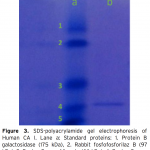

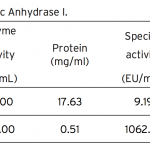
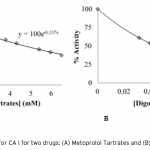
|
231 - 236 |
| A New Type of Poly(GMA) with Carbazole: Synthesis and Characterization The synthesis, characterization and thermal behaviour of styrenic copolymers of glycidyl methacrylate without and with carbazole groups are reported. The copolymers based on glycidyl methacrylates belong to the potential class of functional polymers. Epoxide ring opening reaction is a route that explains the chemical modification of glycidyl methacrylate (GMA) polymers with nucleophilic reagent containing hydroxyl, carboxyl or amine groups. In this work, copolymers of GMA have been modified by incorporation of bulky carbazole groups.The homopolymer of glycidyl methacrylate (GMA) and its random copolymers with styrene , methyl styrene, methoxy styrene were synthesized by free radical polymerization using azobis(isobutyronitrile) (AIBN) as initiator at 70±1°C. The polymers were characterized by 1H-NMR and IR spectroscopic techniques. This modification increases the rigidity of polymers and, subsequently, their glass transition temperature of polymer as shown by DMTA analysis. The results show that, with the incorporation of the carbazole groups in the polymer side chains, a series of novel modified polymer containing new properties are obtained, that can find some applications in polymer industry. 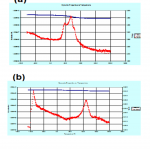
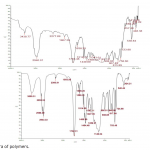
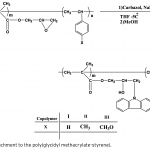
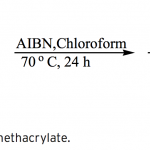
|
237 - 243 |
| The Case Study of Hemoglobin Status: Paint and Chemical Industries Workers Exposed to Organic Acid Anhydrides in S.I.T.E. Area, Kotri, Sindh, Pakistan The main objective of this study is to find an association between hemoglobin (Hb) and Organic acid anhydrides (OAAs). The blood protein Hemoglobin (Hb) is influenced after an exposure to environmental hazardous OAAs compounds in paint & Chemical industry workers occupationally in SITE Area, Kotri, Sindh,Pakistan. A total of 85 workers fulfilled this research study criteria. These workers were divided into two groups like Paint industry (n=40) and chemical industry (n=45) workers. Both worker groups were compared with non-exposed (normal) group for comparative study. The hemoglobin test was done by simple and standard Kit method system on Microlab 300. The data was analysed by using SPSSversion16 software. The mean Hb for paint industry workers (11.5±1.4) and chemical industry workers (12.7±0.7) were lower than non-exposed normal (16.01±0.1) group. Thus, plasma Hb levels were significantly lower among both worker groups. There is prevalence of anemia found due to lower iron deficiency and poor socio-economic conditions among workers after prolonged harmful chemical compounds exposure. 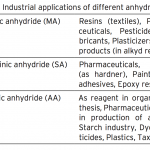
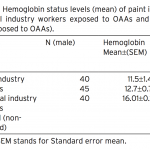

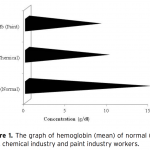
|
245 - 249 |
| Synthesis, Characterization, and Evaluation Of Antibacterial 4H-1,2,4-triazole-5-(4-Bromophenoxymethyl)-3- (4-substituted Benzyl) sulfide Aseries of 4H-1,2,4-triazole-5-(4-Bromophenoxymethyl)- 3-(4-substitutedBenzyl) sulfide derivative (6a-6g) were designed and prepared. The structures have been confirmed using FT-IR spectroscopy, elemental analysis and 1H NMR.Antibacterial study was done using gram+ve (Staphylococcus aureus, and Bacillus cereus) and gram+ve microorganisms (E. coli, and Pseudomonas aeruginosa) and disc diffusion method for evaluation of antibacterial activity. Compound 6d showed the highest effect, while compound 6a showed the lowest. All of the prepared compound has antibacterial activity, but none of them has higher effect than the standard Cefuroxime. 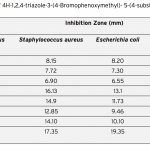
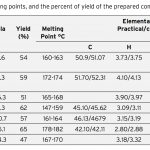
|
251 - 255 |
| Inhibiting Downstream Signaling Pathway of FIT3 in Acute Myeloid Leukemia FLT3 is a type 3 tyrosine kinase receptor susceptible to different genetic mutations in acute myeloid leukemia. Several studies have shown that a large number of patients (approximately one third) have mutations of this gene, lead of which is internal tandem duplications (ITD) that leads to activation of downstream signa- ling pathway and abnormal cellular growth. We used specific target inhibitors to elucidate the combined effects of NOX4 inhibition and the inhibition of FLT3-ITD tyrosine kinase on FLT3-ITD signal transduction. 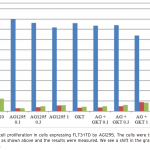
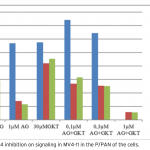
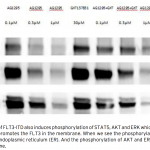
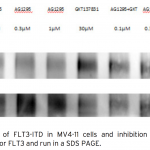
|
257 - 261 |
| Trivalent Cr(III) and Hexavalent Cr(VI) Chromium Affect Morphology and Diversity of Hematopoietic Outcome in Japanese Quail (Coturnix Japonica) Chromium is a naturally occurring heavy metal found commonly in the environment in trivalent Cr(III) and hexavalent Cr(VI) forms. Cr(VI) compounds are rated as potential carcinogens. The study covered an analysis of the effect of Cr(III) as CrCl3 (chromium chloride) and Cr(VI) as CrO3 (chromium oxide) on hematolo- gical parameters of Japanese quail (Coturnix japonica). Chromium was added to food and water ad libitium and the experiment lasted 20 days. Significant differences in values of heterophils and lymphocytes were obtained with the tendency of reducing the number of these blood cells. The surface of erythrocytes, thrombocytes and heterophils was significantly reduced (p<0.05). The lymphocytes surface was significantly reduced (p<0.05) during the application of Cr(VI) and increased (p<0.05) when Cr(III) was administered. Chromium caused su- ppression of the immune system, reduced leucopoiesis and affected on microcytic anaemia development. 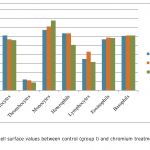

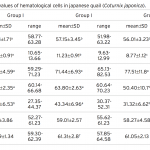

|
263 - 268 |
| Modelling of Diffusion in Random Packings of Core-Shell Particles Core-Shell particles are commonly used materials in chromatography. In this study, a mathematical model that mimics diffusion around Core-Shell particles was developed. A random-walk based algorithm was implemented to simulate diffusion and a Core-Shell particle geometry was computationally formed, based on simple geometric constructs and relations. Diffusion simulations were carried out on a randomly packed geometry formed from these particles. The behavior of time-dependent diffusivity data obtained from the model was found to be consistent with prior literature data from nuclear magnetic resonance experiments where transient diffusivity of a self-diffusing substance was measured in porous media. 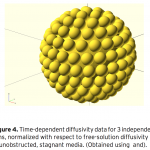

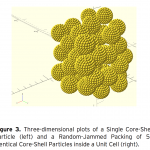
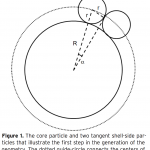
|
269 - 275 |
| Application of Flotation and Spectrophotometric Detection for Preconcentration and Separation of Trace Amounts of Cadmium Ion Using a New Ligand 3-((1H indole-3-yle) (4-Cyano Phenyl) Methyl) 1H Indole (ICPMI) in Real Samples An efficient flotation method based on the combination of flame atomic absorption spectrometry (FAAS) and separation and preconcentration step for determination of Cd2+ ions in various real samples by the possibility of applying Ligand 3-((1H indole-3-yle) (4-cyano phenyl) methyl) 1H indole (ICPMI), as a new collec- tor was studied. The influence of pH, amount of ICPMI as collector, sample matrix, type and amount of eluting agent, type and amount of surfactant as floating agent, ionic strength and air flow rates i.e. variables affecting the efficiency of the extraction system was evaluated. It is as certained that cadmium ion separated simulta- neously from matrix in the presence of 0.012 mM ligand, 0.025% (w/v) of sodium dodecyl sulfate (SDS) and pH 9.0±0.1. These ions can be eluted quantitatively with 0.5 mL of 1M HNO3 in methanol linear range of the determination is between 0.02-2.2 μgmL-1 for Cd2+ with a detection limit for Cd2+ was1.9 μg mL-1 respectively. The method has been successfully applied for determination of trace amounts of cadmium ion in in radiology wastewater, amalgam, natural water and blood samples samples. 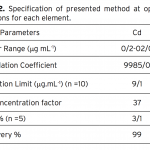
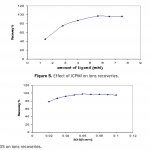
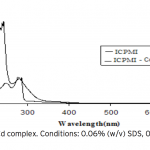
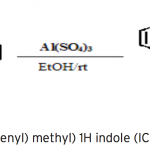
|
277 - 285 |